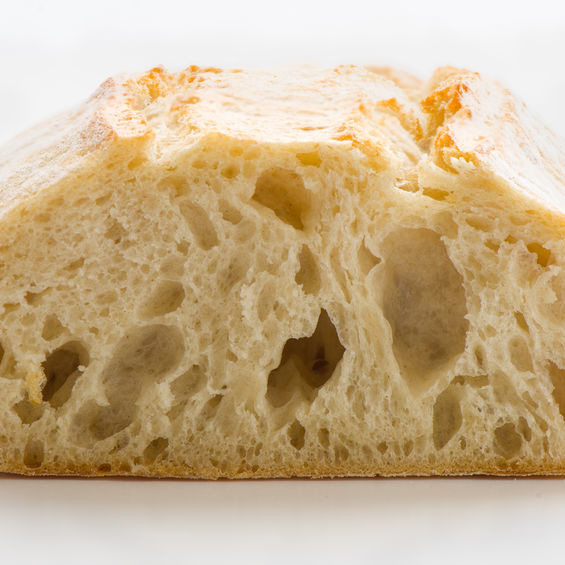
Bread Volume Measurement
What is Bread Volume Measurement?
Bread volume measurement can be carried out objectively using specialized instruments or using traditional rapeseed displacement method.
Bread volume is probably the most important external characteristic of bread. It is a key aspect of consumers appeal as well as quality control program of bread baking. This is often an indication of a good aerated crumb and superior texture, proper formulation and quality of ingredients, dough handling, gas retention as well as processing conditions.
How does it work?
A few methods include:
- Volumeter
- Laser topography (scanning) AACCI Approved Method 10–14.01
- Image analysis
- Ultrasound detection
The Volumeter
The volumeter is a non-destructive method used for measuring bread volume fairly quickly. The apparatus is designed in an hourglass shape to allow a free and even flow of seeds around the product (accurate volume determination).
The volumeter works by using a hopper, filled with a known amount of rapeseed, which fills the empty space of the sample compartment (lower housing) where the bread sample is placed. The graduated scale on the side of the vertical mast allows easy reading of the volume displaced by the bread loaf and measured in cubic centimeters (cm3 or cc).
According to AACC International Method 10–05.01 guidelines, the rapeseed displacement procedure consists of the following steps:
- Run calibration of the volumeter before volume determination. Calibration makes use of a dummy loaf (usually a metal block) of known volume.
- Open the volumeter by unlatching the lower housing and swinging it to the down position.
- Place bread sample in the center of the lower housing of the volumeter device.
- Close the volumeter by bringing it back to an upright position. Secure the lower latch, and then open the gate slide.
- Remove the lid from the upper housing and pour in rapeseed until the fill the latched lower housing (bread compartment).
- The volume of the product is read directly from the calibrated column, as indicated by the level of the rapeseeds in the column.
- Readings should be taken immediately after the flow of seeds over the sample has stopped.
Determination of Bread Volume by Laser Topography: BVM Method
This method has been developed collaboratively among several laboratories. It offers a much more reliable, repeatable and reproducible volume measurement than traditional rapeseed displacement and enables the assessment of wider variety of baked goods such as those that are sticky, compressible, fat- and moisture-rich bakery products with a volume range of 200 to 2,800 mL or cc.3
Despite its accuracy, this method is not commonly used by bakeries due to capital investment requirements that are not available to many smaller bakeries.
Application
- Care should be taken to view the height of the seeds at eye level so that the reading corresponds well to the calibration scale.
- Products with high moisture and/or sugar content may require a light dusting of flour to prevent rapeseeds from sticking to them.
- To ensure an accurate reading, volume measurements should be taken while the product is still firm. This means using bread that has just been taken out of the oven. At this point, moisture equilibration has not occurred yet and the crust is hard and able to withstand the weight of the seed without deforming.
- Volume measurement should be performed quickly and precisely if using a sample that is still hot. Condensation might cause rapeseeds to stick to each other and cause inaccurate readings.
- Alternatively, volume measurement can be carried out after product has reached equilibrium moisture or undergone a fixed and controlled cooling process. In this case, the product would be soft, and care during sample handling is key.
To aid in the comparison of loaves of different weights, the concept of specific volume or volume per unit weight is used. This is done by dividing the volume measured by the weight of the bread sample in grams (cm3/g). Temperature of product should be registered when measuring volume and weight as bread loses moisture during cooling.
As an example, if a loaf of bread displays a volume of 2,560 cc and weighs 454 g one hour after baking, then the specific volume of the bread would be:
Volume / weight = 2,560 / 454 = 5.64 cm3/g
References
- AACC International. Approved Methods of Analysis, 11th Ed. Method 10–05.01, Guidelines for Measurement of Volume by Rapeseed Displacement. First approval October 17, 2001. Cereals & Grains Association, St. Paul, MN, U.S.A.
- Sahi, S.S., Little, K., and Ananingsih, V.K. “Quality Control.” Bakery Products Science and Technology, 2nd edition, John Wiley & Sons, Ltd, 2014, pp. 490–500.
- Anderson, S., Purhagen, J.K., and Bason, M.L. AACCI Approved Methods Technical Committee Report: Collaborative Study on Bread Volume Determination by Laser Topography Using a Bread Volume Meter. Cereal Foods World. 2014;59:294–296.

